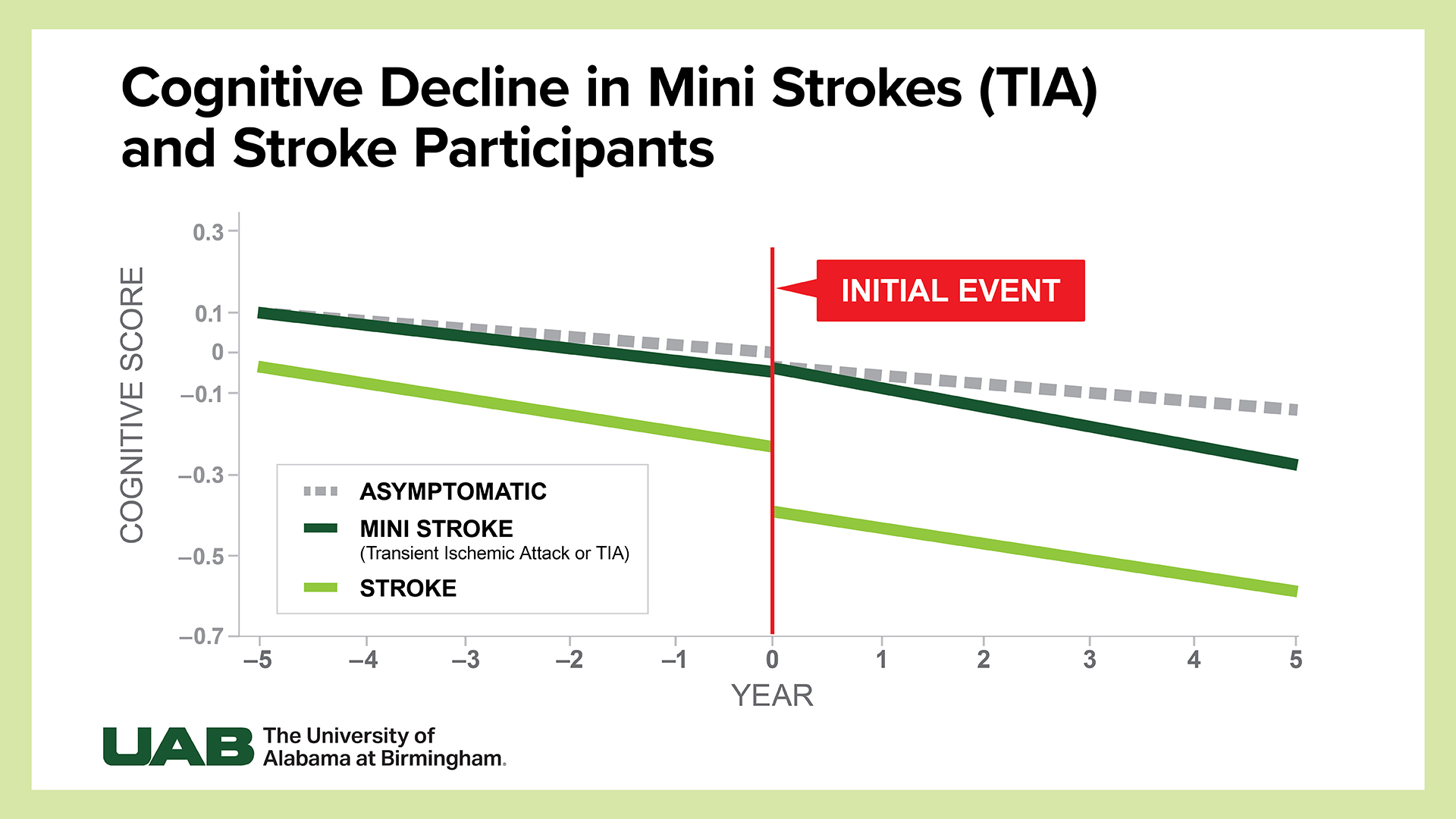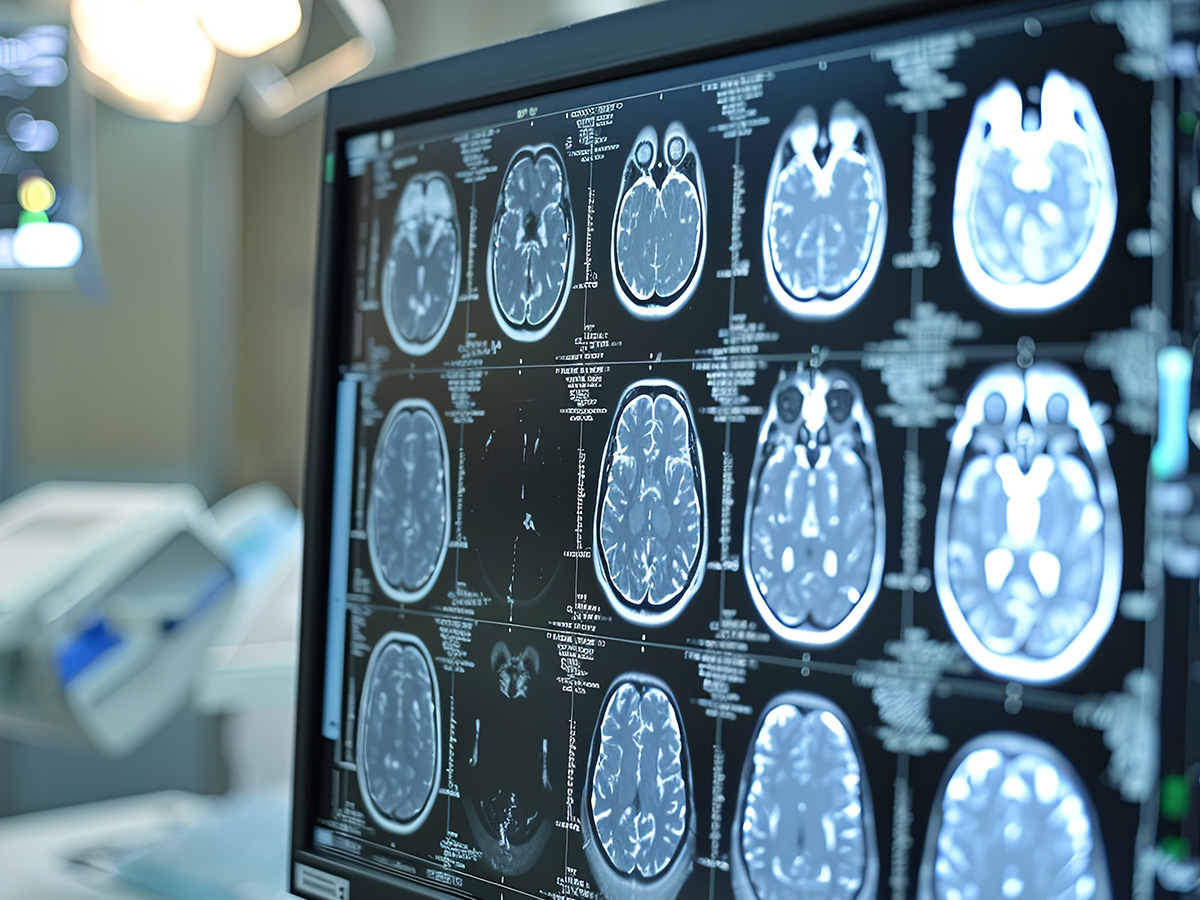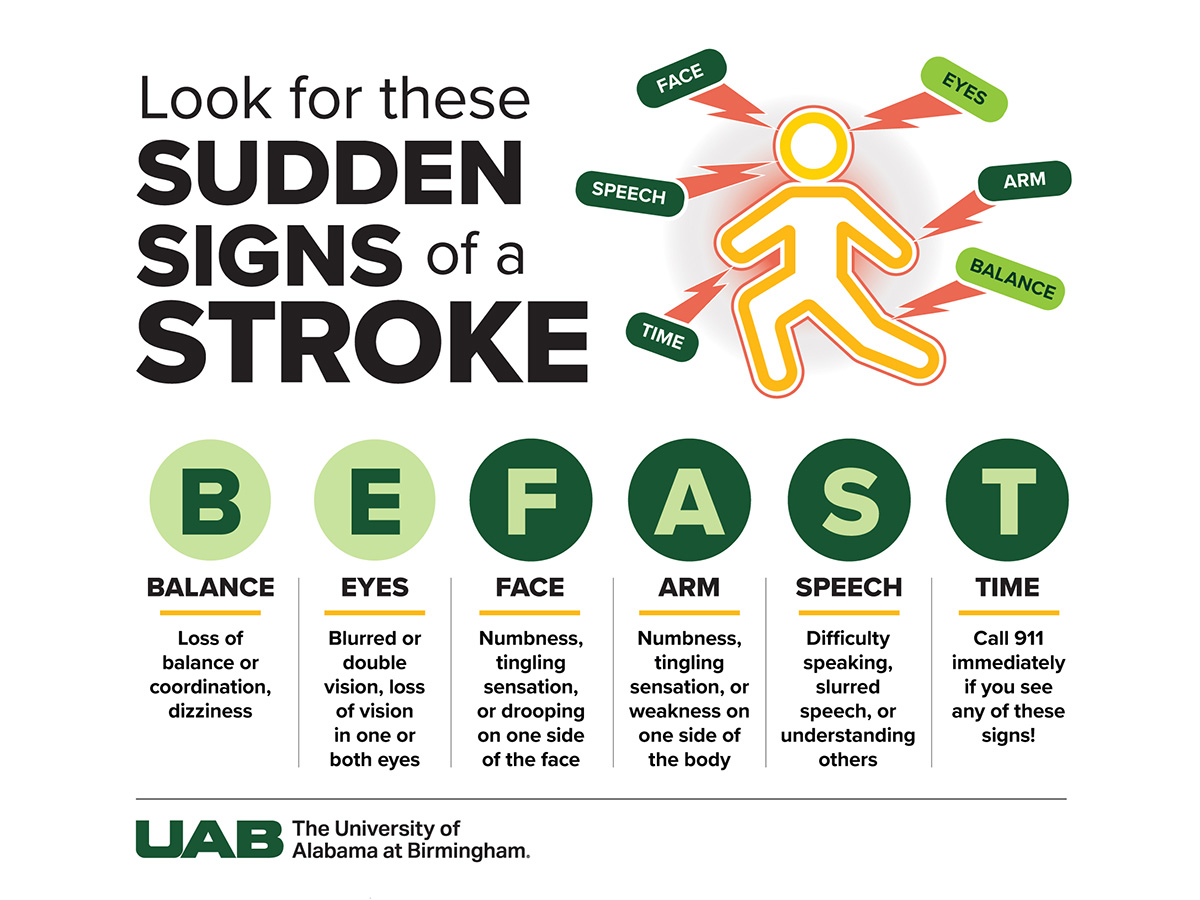
While strokes are widely recognized as a major cause of long-term disability in the United States, their quieter cousin, the mini stroke, or transient ischemic attack (TIA), often flies under the radar. These brief episodes of disrupted brain function may seem harmless, but could they be warning signs of something more serious?
Researchers at the University of Alabama at Birmingham evaluated TIAs’ effect on cognitive function and found a correlation between TIAs and future cognitive decline. While TIA participants were less impaired than stroke participants, results showed the two groups have the same rate of cognitive decline after their cerebrovascular event. Results were published in JAMA Neurology.
“Mini strokes are often viewed as relatively benign cognitive events that have minimal impact on long-term health besides an increased risk of a full stroke,” said Victor Del Bene, Ph.D., assistant professor in the UAB Department of Neurology and lead author. “Our study suggests that TIAs are important medical events that affect long-term cognitive outcomes.”
Mini strokes are events during which a brain region is temporarily deprived of oxygen, most often for only few minutes, and are without a lesion on brain MRI scans. Around 240,000 people a year experience a mini stroke, and one-third later sustain a full stroke.
 Mini strokes are events during which a brain region is temporarily deprived of oxygen, most often for only few minutes, and are without a lesion on brain MRI scans.Previous research showed reduced cognitive function following a TIA. However, the studies did not have measurements of cognition before the TIA, and additional vascular risk factors were not adjusted or excluded. In the absence of the pre-TIA cognitive baseline, this created uncertainty about whether cognitive decline after the TIA was related to the actual TIA event.
Mini strokes are events during which a brain region is temporarily deprived of oxygen, most often for only few minutes, and are without a lesion on brain MRI scans.Previous research showed reduced cognitive function following a TIA. However, the studies did not have measurements of cognition before the TIA, and additional vascular risk factors were not adjusted or excluded. In the absence of the pre-TIA cognitive baseline, this created uncertainty about whether cognitive decline after the TIA was related to the actual TIA event.
Using data from the UAB School of Public Health’s REGARDS study, researchers obtained the pre-TIA cognitive baseline. They excluded participants with a previous TIA or stroke event at the time of enrollment, followed the remaining participants over time to identify when they had their first TIA or stroke, and adjusted for additional cognitive risk factors.
“It was the first time a study established a pre-TIA cognitive baseline to compare the post-TIA cognitive levels,” said Ronald Lazar, Ph.D., Endowed Chair and director of the Evelyn F. McKnight Brain Institute at UAB. “The baseline made the correlation between TIAs and cognitive decline clearer.”
Data showed stroke participants experienced an immediate drop in their overall cognitive level, whereas TIA participants did not see a significant decline at first. TIA participants had overall less impairment than stroke participants, even as both groups developed the same rate of decline.
“We hypothesized that TIA would be associated with cognitive decline but thought the rate of decline would not be similar to the participants with a clinically obvious stroke,” Del Bene said. “It is significant because our results provide compelling evidence that a single TIA can alter cognitive trajectories.
 As soon as symptoms appear, even if temporary, call 911. Earlier intervention improves the likelihood of preserving brain function and reducing long-term disability.One limitation of the study included the lack of data regarding the severity of the strokes to evaluate how stroke severity may play a role in overall cognitive decline. However, the findings offer valuable insights for both clinicians and researchers working in stroke care and recovery.
As soon as symptoms appear, even if temporary, call 911. Earlier intervention improves the likelihood of preserving brain function and reducing long-term disability.One limitation of the study included the lack of data regarding the severity of the strokes to evaluate how stroke severity may play a role in overall cognitive decline. However, the findings offer valuable insights for both clinicians and researchers working in stroke care and recovery.
“Clinically, TIA patients should be carefully evaluated for physical and cognitive changes at the time of the event and evaluated over time for potential cognitive decline,” Del Bene said. “Future research should also focus on the mechanisms by which a TIA and causes cognitive decline. Ultimately, it could broaden how we define stroke, which would change established clinical and research guidelines.”
Del Bene and Lazar reiterate the importance of knowing the signs of strokes and TIA, such as BE FAST. As soon as symptoms appear, even if temporary, call 911. A TIA is often associated with a larger stroke within 30 days, especially the first 72 hours. Earlier intervention improves the likelihood of preserving brain function and reducing long-term disability. Treatment and prevention options can be found at the UAB Comprehensive Stroke Center.
This research project was supported in part by the cooperative agreement U01 NSO41588 co-funded by the National Institute of Neurological Disorders and Stroke and the National Institute on Aging, National Institutes of Health, Department of Health and Human Services; NINDS grant U24 NS107223-06 (Drs. Gropen, Lazar and Harrigan); and the McKnight Brain Research Foundation (Lazar).